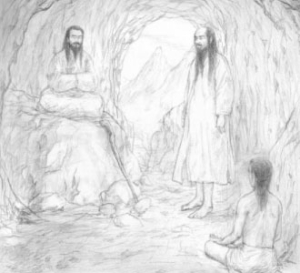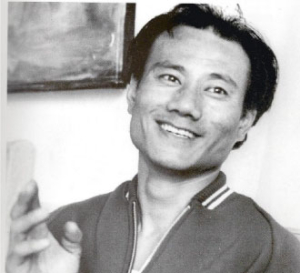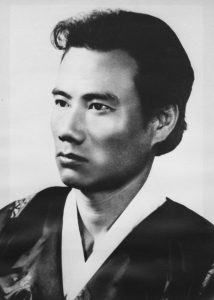SunDo originates from ancient Korean people in Northeast Asia, where the ancient peoples of Korea lived, before the advent of Buddhism and other religions, which subsequently gained a dominant position in Korea. It was practiced for centuries as Mountain Taoism. It is dated from about 9700 years ago.
It is said that at the end of the ice age, a group of people traveled towards the east, where the sun rose in the morning. People were looking for a source of heat and life force, believing that it was the sun that brought them. They longed for strong solar energy and began intuitively practicing Way of Receiving Bark exercises. In the silence of the sun, they adjusted the body and humbly tried to receive energy into all parts of the body in a smooth change of position. This practice of absorbing solar energy later evolved into the SunDo exercise system.
It is believed that the SunDo system was fully structured in the Neolithic period and was part of education until it was transferred to the mountains.
 In ancient times in Korea, those who aspired to become shamans or clergy went to the mountains to gain the ability to communicate with the Heavens. The sky, moon and stars have been revealed as a life force that is present in all living beings. It was thought that humans could get closer to the Heavens (space, stars, sun) in the mountains. The practice was naturally breath-oriented, because air was their connection to heaven, earth, and human beings. They tried to breathe more air and breathe harmoniously. They slowly learned how to breathe through the skin, circulate inhaled qi, and then attain enlightenment.
In ancient times in Korea, those who aspired to become shamans or clergy went to the mountains to gain the ability to communicate with the Heavens. The sky, moon and stars have been revealed as a life force that is present in all living beings. It was thought that humans could get closer to the Heavens (space, stars, sun) in the mountains. The practice was naturally breath-oriented, because air was their connection to heaven, earth, and human beings. They tried to breathe more air and breathe harmoniously. They slowly learned how to breathe through the skin, circulate inhaled qi, and then attain enlightenment.
These teachings were passed down orally to those who were mentally and physically prepared.
In those times all important kings, scholars, politicians and warriors were brought up to practice SunDo. Over time, the SunDo lost popularity because people were unwilling to expose themselves to such a demanding practice for the development of mind and spirit.
The SunDo teachers then took refuge in the mountains with the surrendered students in order to maintain continuity in practice.
The development of SunDo flourished in the time of Three Kingdoms (300 – 700 I. Hr.). With the arrival of foreign influences and philosophies starting with Joseon Dynasty, some practitioners retreated to the mountains to preserve and protect this art from extinction. Since then, SunDo has been passed down from teacher to student for thousands of years. Only in the last 50 years, has this practice been re-introduced into mainstream culture.
In 1967, Master Chung San (pictured) came down from the mountains after twenty years of SunDo training and brought the practice back. After hundreds of years of isolated practice, the mountain masters have decided that it is time to reveal the secret of the SunDo for the benefit of the people of the modern world.
Taoist hermit Be-Kyung (the original name was Chung-San – Blue Mountain), was a young boy wandering in the mountains of Korea when he met a strange man. This man said, “If I teach you to break stones, will you follow me?” The young boy was more curious than serious and he answered, “Yes.” The man, Chung-Woon (Clear Clouds), proceeded to break stones with his fingers, so the boy (Chung-San) decided to follow this mountain hermit and learn his teachings.
Chung-San lived an ascetic life for about 20 years, taught by Chung Woon and his teacher, Moo Woon (No Clouds). Toward the end of this period, Chung-Woon announced to Chung-San that it was time he returned to society to pass on the wisdom of the ancient SunDo teachings. At that time, Chung-Woon gave him another name, Be-Kyung (Secret Boundary).
Be-Kyung prepared to re-enter normal life by adjusting his diet, obtaining clothing and remembering the ways of the people who don’t live in nature. In 1970, under Be-Kyung’s supervision, the first SunDo main school (the Kouk SunDo Center) opened in Seoul, Korea. After 15 years of service to his fellow human beings, Be-Kyung, in 1984, quietly returned to the hermit life in the mountains.

His wish is that people from all over the world, regardless of religion, race or nationality to be healthier and to improve the quality of their lives. These days, there are centers all over the world, not just South Korea, but also in USA, Russia, Canada, Portugal, France, Czech, Romania.
Master Hyunmoon Kim is one of 12 masters sanctioned by Taoist Hermit Be-Kyung, and he is internationally known as Taoist Master. Teaching the potential for human development and consciousness, Master Kim has been teaching since 1980 in North America, South East Asia, and Europe. He makes authentic SunDo practice readily accessible to people which helps to improve the quality of their lives.
